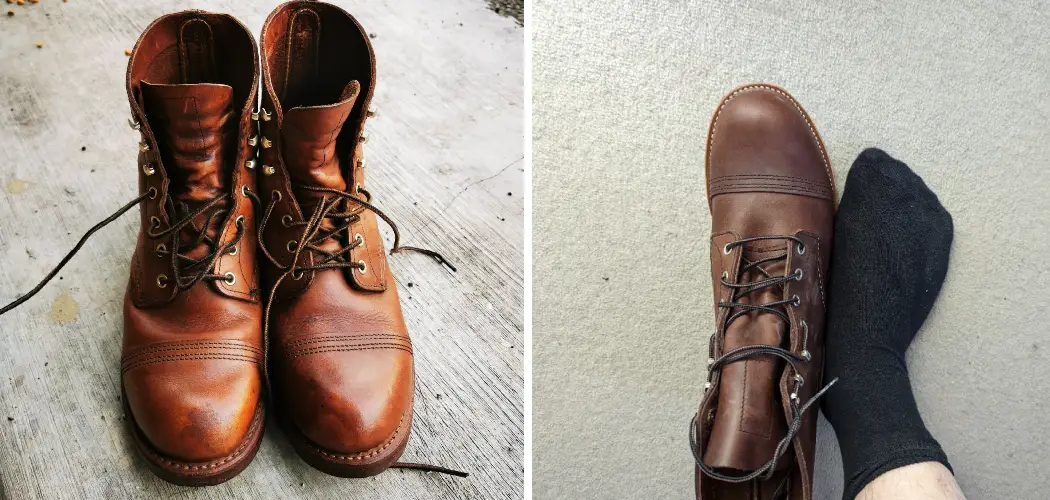If you have ever purchased a pair of boots, you know how important it is to get the right size. Wearing boots that are too big can not only be uncomfortable, but they can also lead to foot problems and even injuries. Knowing how to tell if your boots are too big is crucial in ensuring proper fit and comfort.
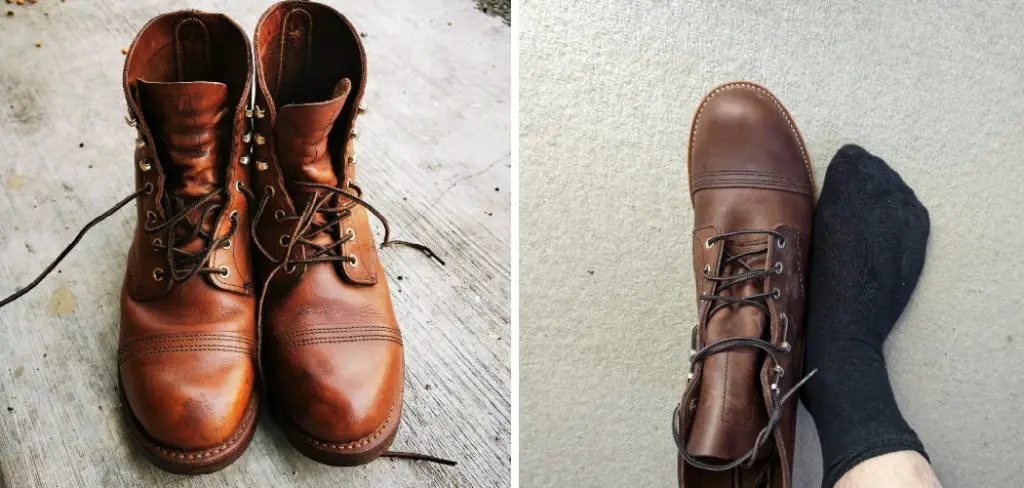
The main advantage is that you will be able to find the perfect boots for your feet. This will help you avoid buying shoes that are too big, which can cause foot pain and discomfort.
Furthermore, knowing to tell if boots are too big can also save you money. If you buy a pair of boots that are too large, they may not fit properly and could lead to injury. Recognizing when a pair of boots is too big for you can prevent you from making an unnecessary purchase. Read this blog post to learn how to tell if boots are too big.
Step by Step Processes for How to Tell if Boots Are Too Big
Step 1: Inspect the Heel
When you put on a pair of boots, the heel should fit snugly into the boot. If there is too much space between your heel and the back of the boot, it could mean that they are too big. Make sure to walk around and see if your foot slips out of the boot while wearing them.
Step 2: Check for Wrinkles
Another sign that your boots are too big is if there are noticeable wrinkles in the leather or fabric. This can be a result of excess material due to the boot being too large for your foot. To accurately determine the size of your foot, measure it while wearing a sock. This will help account for any extra padding or thickness that your socks may add to the size of your foot.
Step 3: Check for Room in the Toe Box
The toe box is the area at the front of the boot where your toes rest. Ideally, there should be enough room for your toes to wiggle comfortably, but not so much that they are moving around excessively. If you can easily wiggle your toes or they are consistently hitting the front of the boot, it could indicate that the boots are too big.
Step 4: Look for Foot Slippage
When walking in your boots, pay attention to any slippage or movement of your foot inside the boot. If you feel like your foot is sliding around or not staying securely in place, it may be a sign that the boots are too big.
Properly fitting boots should provide adequate arch support for your foot. If you feel like your arches are not being supported or they are slipping out of place, it could indicate that the boots are too big and not providing proper support.
Step 5: Consider Your Socks
The type of socks you wear can also affect the fit of your boots. Thinner socks may result in a looser fit, while thicker socks can make the boots feel too snug. Be sure to try on your boots with different types of socks to get a better understanding of how they fit.
When trying on boots, don’t rush the process. Take your time to walk around in them and make sure they feel comfortable and secure on your feet. This will give you a better understanding of how they fit and if they are too big.
Step 6: Consider Insoles or Inserts
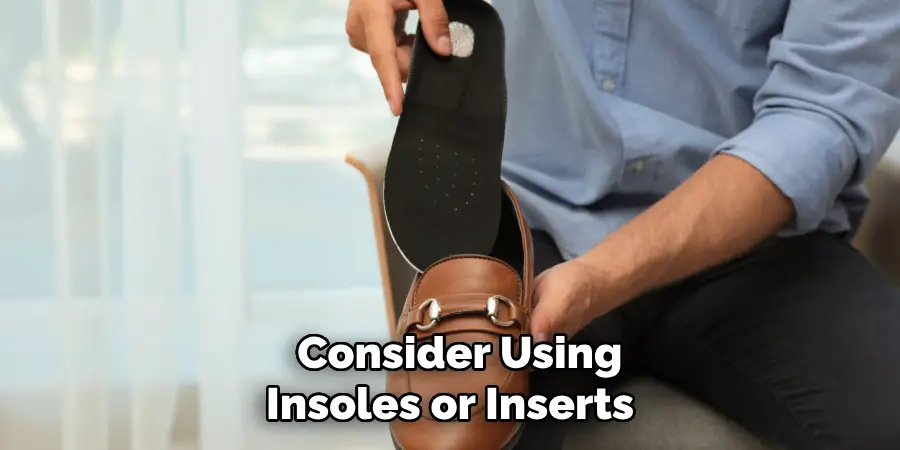
If you have determined that your boots are too big, consider using insoles or inserts to fill in the extra space. These can provide added comfort and support while also helping to make the boots fit more snugly.
If you are still unsure if your boots are too big, consult with a professional at a shoe store or boot fitter. They will be able to accurately measure your foot and determine if the boots are indeed too big, and provide recommendations on finding the right fit for your feet.
By following these steps, you can confidently determine if your boots are too big and take necessary actions to find the perfect fit. Remember that proper fitting boots not only provide comfort, but also help prevent discomfort and potential foot problems in the future.
Tips for How to Tell if Boots Are Too Big
- Always wear the right size boots – It’s important to remember that wearing the wrong size boots can lead to discomfort and blisters. Make sure you’re wearing the correct size for your feet.
- Check for proper fit – When trying on a pair of boots, make sure they are snug but not too tight. You should be able to wiggle your toes comfortably but not have extra space in the heel or sides.
- Walk around – Take a few steps in your new boots to get a feel for how they fit. If you notice any rubbing or discomfort, it’s likely the boots are too big.
- Pay attention to slipping – When walking, if you feel your feet sliding around inside the boots, this is a sign that they are too big. This can lead to blisters and discomfort.
- Consider the socks you’ll be wearing – If you plan on wearing thick socks with your boots, make sure to try them on with those socks. This will give you a better idea of how they will fit when worn in real-life situations.
- Listen for any noises – When walking, listen for any squeaking or slapping sounds coming from your boots. This could indicate that they are too big and not fitting properly.
- Ask for a professional opinion – If you’re unsure about the fit of your boots, don’t be afraid to ask for help. A trained salesperson can give you their expert opinion on whether or not the boots are too big for your feet.
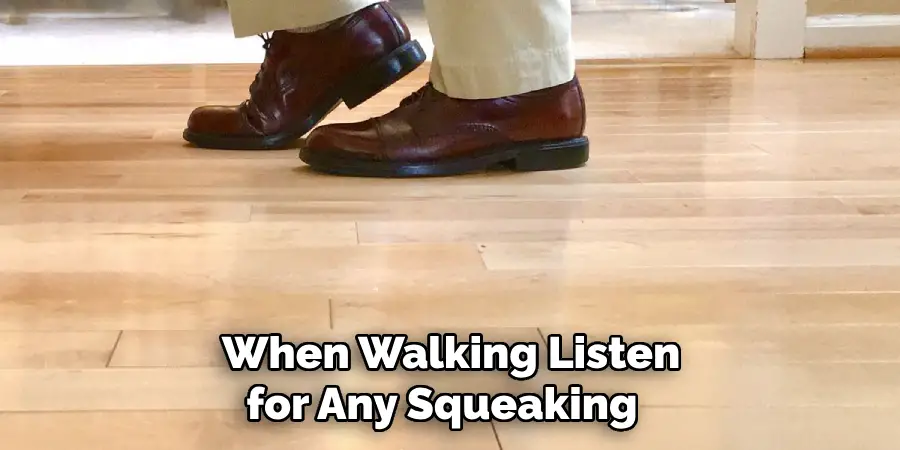
Remember, wearing improperly sized boots not only leads to discomfort and blisters, but it can also cause foot injuries. Make sure to take the time to properly assess the fit of your boots before wearing them for extended periods of time.
What Are the Signs That a Boot is Too Big for Your Foot?
Boots are a staple in many people’s wardrobes, but finding the perfect pair can be tricky. Not only do they need to fit your style and aesthetic, but they also need to fit your feet comfortably. Wearing boots that are too big for your foot can cause discomfort and even lead to foot problems over time.
1. Heel Slippage
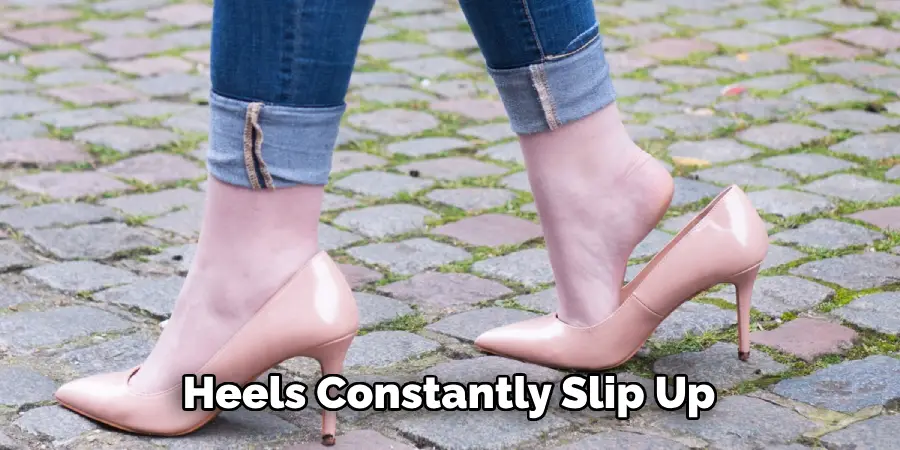
One of the most common signs that your boots are too big is heel slippage. If your heels constantly slip up and down in your boots as you walk, it’s a clear indication that your boots are too big for your feet. This can cause blisters, calluses and even ankle sprains if not addressed.
2. Too Much Room in the Toe Box
Another sign that your boots are too big is when there is excess room in the toe box. When you’re standing, you should have about a half-inch of space between your toes and the tip of your boots. However, if you can fit more than one finger in this space, that means your boots are too big and could lead to discomfort and blisters.
3. Difficulty Walking
If you find yourself struggling to walk or feeling like you’re tripping over your own feet while wearing your boots, it’s a sign that they are too big for you. This can be especially dangerous in certain situations, such as when walking on uneven or slippery surfaces.
4. Lack of Arch Support
Boots that are too big often lack proper arch support, which can lead to foot pain and discomfort. If you notice your feet feeling tired or achy after wearing your boots for a few hours, it could be a sign that they are too big and not providing the necessary support for your feet.
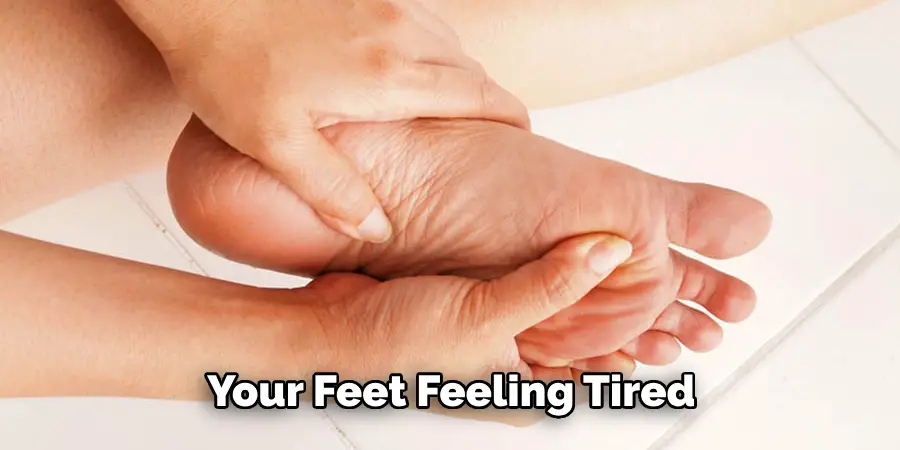
5. Visible Gaps When Laced Up
When you lace up your boots, there should be little to no visible gaps between the laces. If you notice significant gaps or looseness in the laces, it’s a sign that your boots are too big and not properly fitting your feet.
6. Slipping Out of Boots
Perhaps the most obvious sign that your boots are too big is if you find yourself slipping out of them while walking. This can be dangerous and lead to injuries, so it’s important to pay attention to this sign and get properly fitting boots.
Now that you know how to tell if your boots are too big, you can make sure that you have a comfortable and safe fit for your feet. Remember to always try on boots before purchasing and pay attention to the signs listed above.
Are There Any Common Mistakes People Make When Trying to Determine the Right Boot Size for Their Feet?
Here are some common mistakes people make when trying to determine the right boot size for their feet.
1. Measuring Only One Foot
Most people have one foot that is slightly larger than the other. So, it’s important to measure both feet before buying boots. If you only measure one foot and buy boots based on that measurement, there’s a high chance they won’t fit properly.
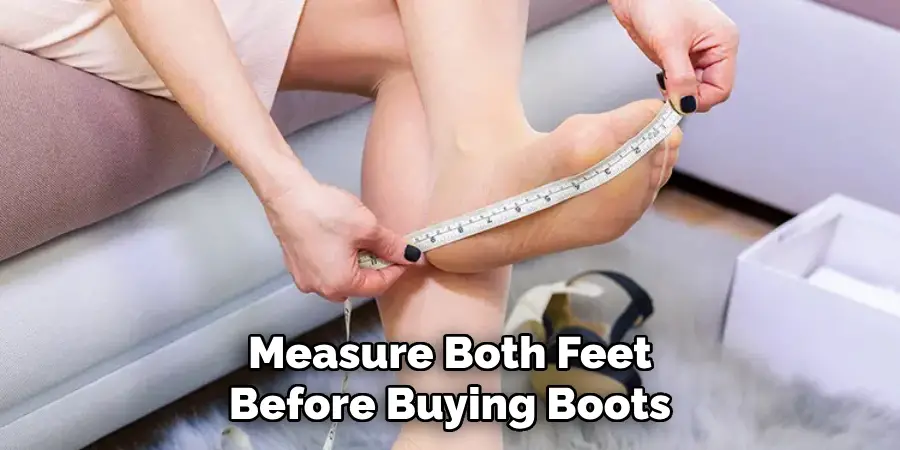
2. Not Considering Sock Thickness
One of the biggest mistakes people make when trying to determine boot size is not accounting for sock thickness. If you’re planning to wear thick socks with your boots, you need to measure your feet while wearing those socks. Otherwise, the boots might feel too tight when you finally put them on.
3. Ignoring Arch Support
While it’s easy to focus on foot length and width when determining boot size, many people forget about arch support. Having proper arch support is crucial for overall foot health, and if your boots don’t provide adequate support, you’ll likely feel discomfort or even pain while wearing them.
4. Not Trying Them On
The best way to tell if a pair of boots are too big is by trying them on. When shopping in-store, make sure to try on different sizes and walk around in them. If you’re shopping online, double-check the store’s return policy so you can try on the boots at home and return them if they don’t fit.
5. Relying Too Much on Shoe Size Charts
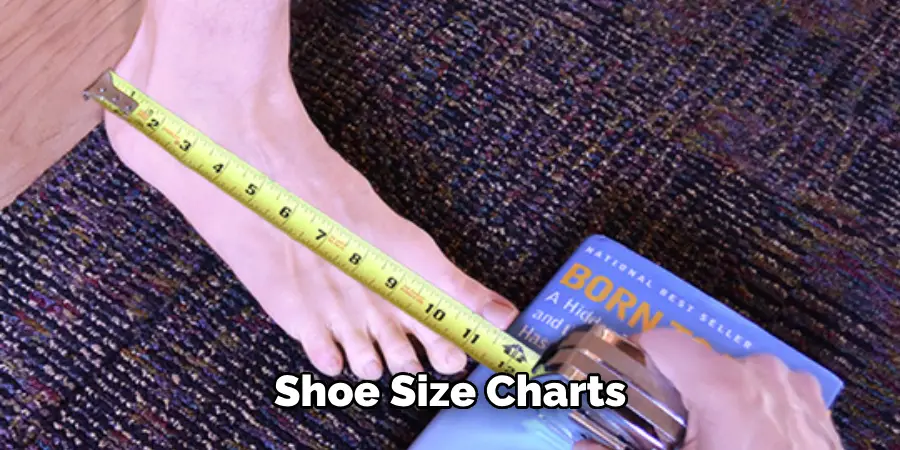
Shoe size charts are a helpful tool when buying shoes, but they’re not always accurate. Every brand and even every style of boot may have slightly different measurements. So, while it’s a good idea to use shoe size charts as a starting point, it’s important to also try on the boots and make adjustments based on how they feel.
6. Ignoring Your Instincts
At the end of the day, your instincts are often the best indicator of whether or not a pair of boots fit properly. If they feel too loose or too tight, trust your gut and try a different size. Your comfort is the most important factor, so don’t be afraid to go against the measurements and trust what feels best for you.
So, if you’re wondering to tell if boots are too big, make sure to avoid these common mistakes. Measure both feet, account for sock thickness and arch support, try them on before buying, don’t rely solely on size charts, and trust your instincts.
Conclusion
In conclusion, finding the perfect pair of boots can be a daunting task, especially when it comes to determining the correct size. However, with these helpful tips, you can easily tell if your boots are too big and avoid any discomfort or potential foot injuries. First and foremost, pay attention to how your feet feel in the boots. If they feel like they are slipping or sliding around inside, then they are most likely too big. This can cause blisters and discomfort as your foot is not properly supported.
Another way to tell if your boots are too big is by checking the heel slippage. Stand up straight and try to lift your heel off the ground while still wearing the boots. If the boot easily comes off or slips around, then it is too big. You should have a snug fit in the heel area for proper support and stability.I hope this article has been beneficial for learning how to tell if boots are too big. Make Sure the precautionary measures are followed chronologically.

